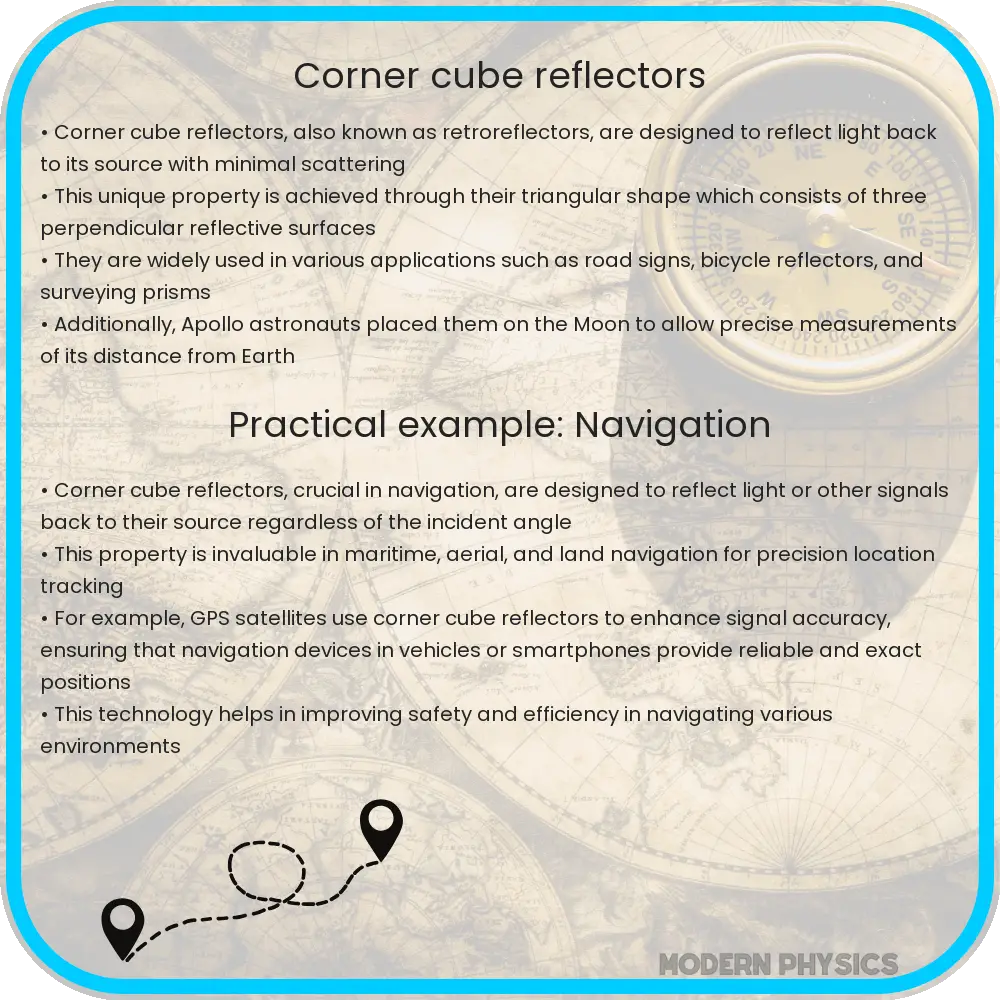Corner Cube Reflectors, also known as retroreflectors, stand at the forefront of optical technology, merging precision, efficiency, and innovative design.

Exploring the World of Corner Cube Reflectors
Corner Cube Reflectors, also known as retroreflectors, stand at the forefront of optical technology, merging precision, efficiency, and innovative design. These devices reflect an incoming light beam back to its source with minimal scattering, making them invaluable in a variety of applications ranging from satellite communications to road safety. This unique property is due to their internal structure, which consists of three mutually perpendicular, reflective surfaces that form a corner.
The Precision of Corner Cube Reflectors
The precision of Corner Cube Reflectors lies in their geometric design, which ensures that light is reflected back to its source regardless of the angle of incidence. This characteristic is critical in applications requiring high accuracy, such as laser rangefinding and optical signal processing. By integrating these reflectors, systems achieve enhanced precision in measuring distances, speed, and direction with remarkable reliability.
Efficiency in Design
Efficiency in Corner Cube Reflectors is not just about their ability to return light to its source but also their compactness and the minimal energy loss during reflection. Their design allows for a wide acceptance angle, meaning they can capture and reflect light from various directions efficiently. This efficiency is crucial in applications like emergency location beacons and traffic signage, where visibility from all directions enhances safety and functionality.
Innovative Applications and Designs
Corner Cube Reflectors are not static in design or application. Innovations in materials and manufacturing processes have expanded their use beyond traditional fields. For instance, the incorporation of materials like fused silica or borosilicate glass, tailored for specific wavelength ranges, has opened new avenues in scientific research and telecommunications. Furthermore, advancements in microfabrication techniques have enabled the production of miniaturized corner cube reflectors, paving the way for their integration into compact optical devices and sensors.
The application of these reflectors in global positioning systems (GPS) and lunar ranging experiments exemplifies their role in advancing technology and science. The reflectors placed on the moon’s surface during the Apollo missions continue to provide data for precise measurements of the Earth-Moon distance, showcasing the lasting impact of these optical devices.
Enhancing Safety and Communication
One of the most visible applications of Corner Cube Reflectors is in road safety. Reflective road signs and lane markers containing these reflectors significantly improve nighttime visibility and safety. By reflecting headlights back to drivers, they ensure roads are navigable even under low visibility conditions, thus reducing accidents and enhancing driver confidence. Similarly, in telecommunications, corner cube reflectors play a vital role in the stability and reliability of satellite communication systems, enabling high-speed data transmission across vast distances with minimal signal loss.
Sustainable and Durable Solutions
The sustainability and durability of Corner Cube Reflectors are also noteworthy. Materials used in their construction, such as glass or synthetic polymers, are chosen for their longevity and resistance to environmental factors. This durability ensures that once installed, whether on a satellite, a vehicle, or a traffic sign, they continue to perform with minimal maintenance. Moreover, their energy efficiency and the role they play in safety and communication infrastructure contribute to a more sustainable and technologically advanced society.
The Future of Corner Cube Reflectors
The future of Corner Cube Reflectors looks promising as research delves into nano-engineered materials and quantum optics. These advancements could lead to even more precise and efficient reflectors, opening new possibilities in areas such as autonomous vehicle navigation, enhanced space exploration, and even quantum computing. As technology progresses, the adaptability and applications of corner cube reflectors are expected to expand, making them an even more integral part of modern optical technologies.
Conclusion
Corner Cube Reflectors exemplify the harmony between precision, efficiency, and innovative design in the realm of optics. Their ability to reflect light back to its source with unparalleled accuracy makes them indispensable in a myriad of applications, from enhancing road safety to facilitating global communication networks. As we continue to push the boundaries of optical technology, the role of these reflectors will undoubtedly grow, driven by ongoing innovations and the ever-increasing demand for reliability and precision in our interconnected world. The journey of Corner Cube Reflectors, from simple geometric curiosity to cornerstone of modern optical applications, is a testament to the power of ingenuity and engineering in overcoming challenges and shaping the future.
